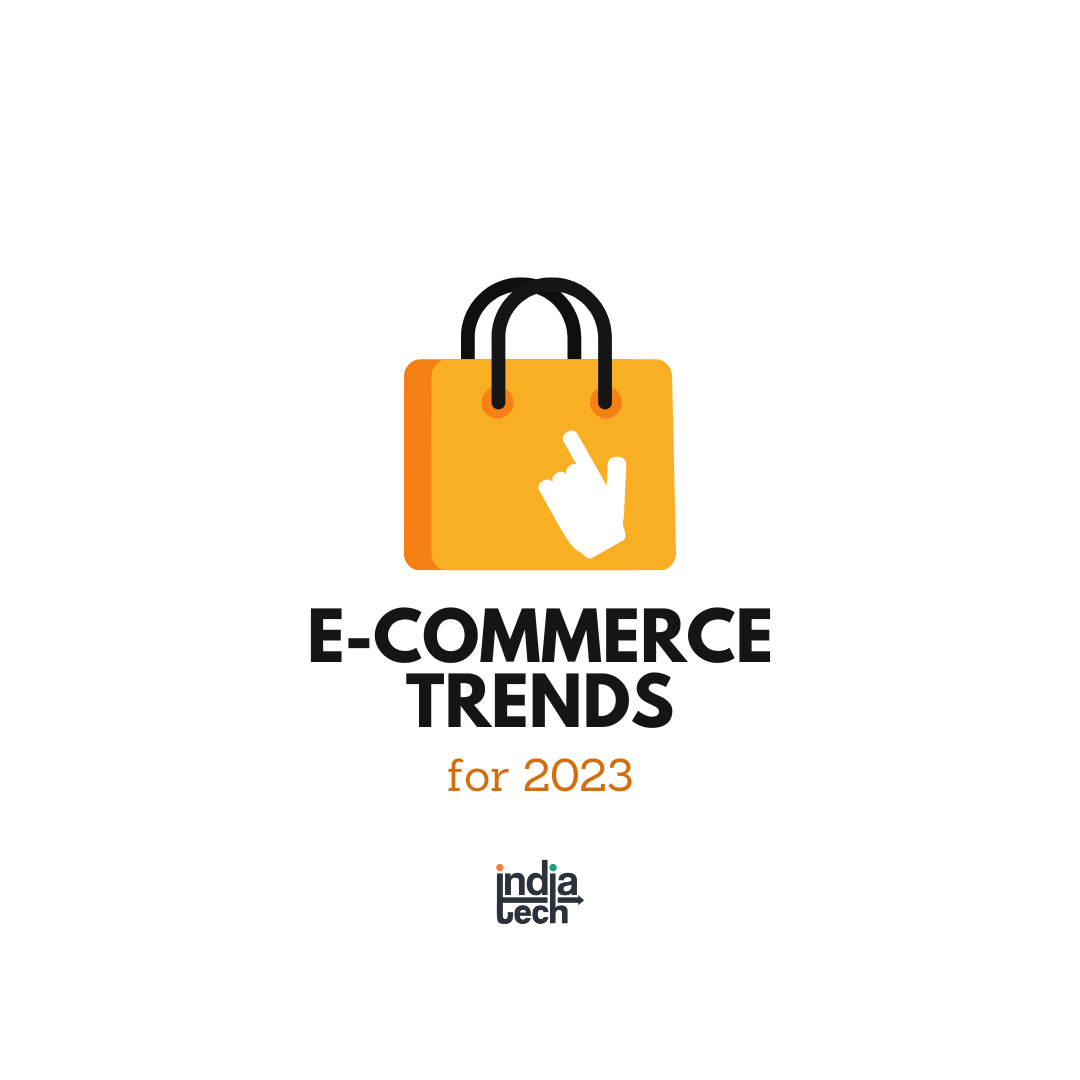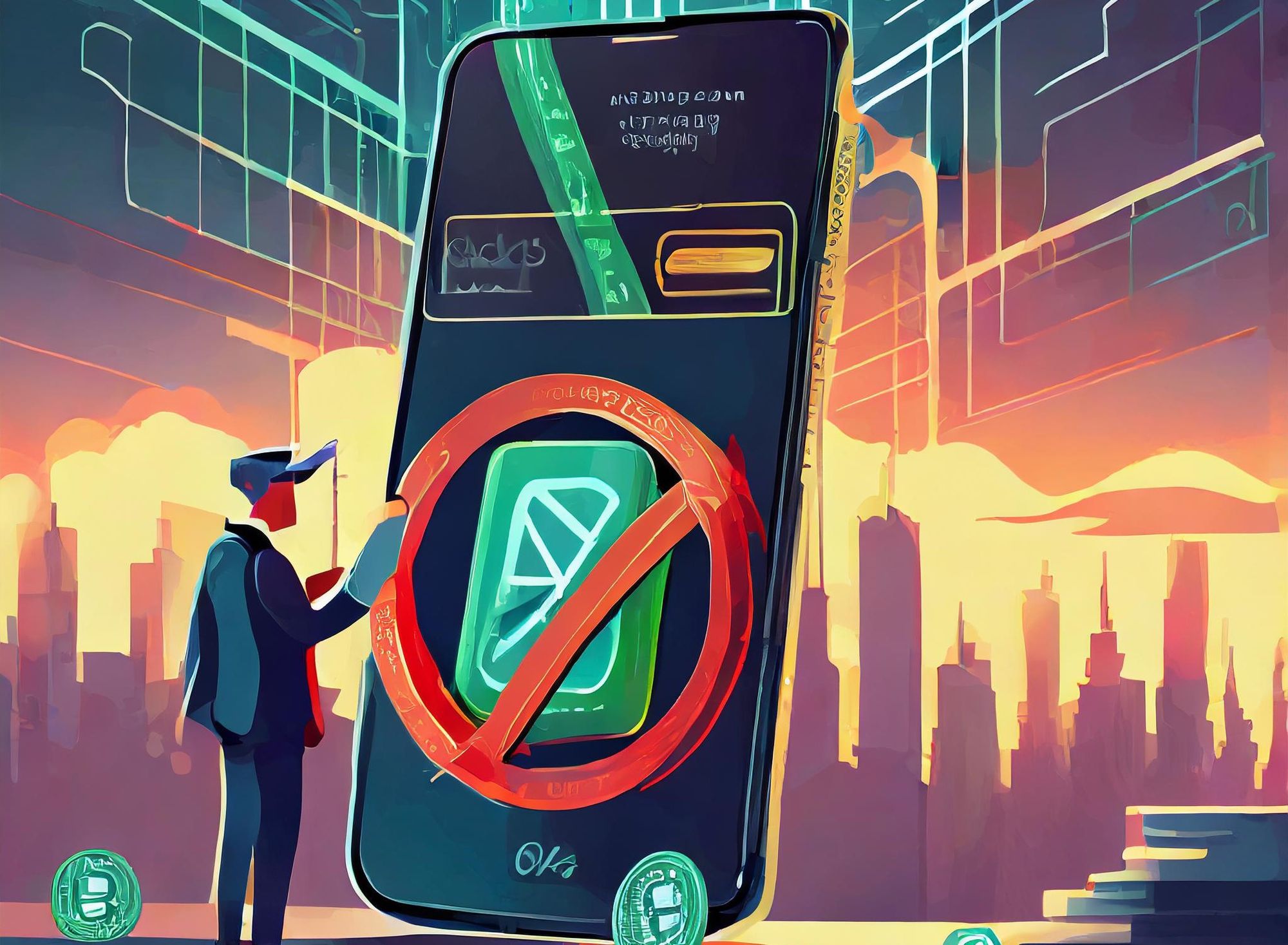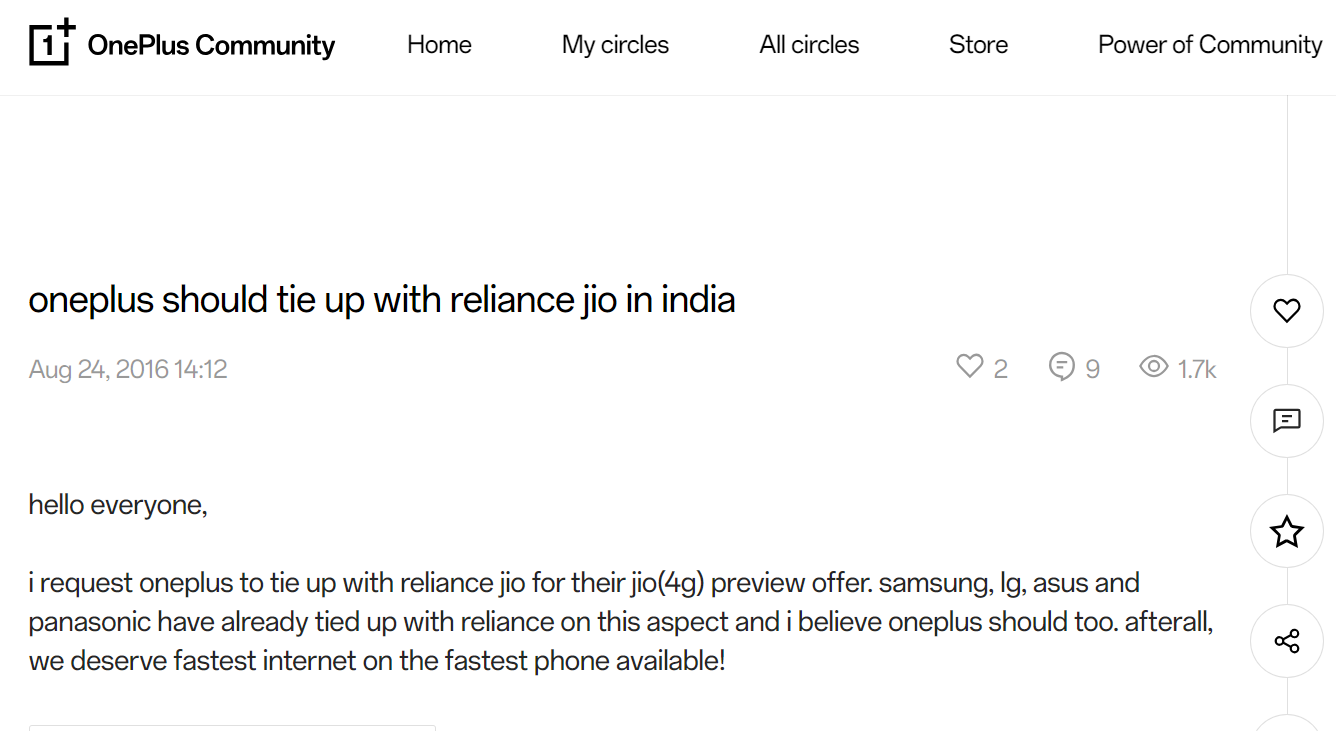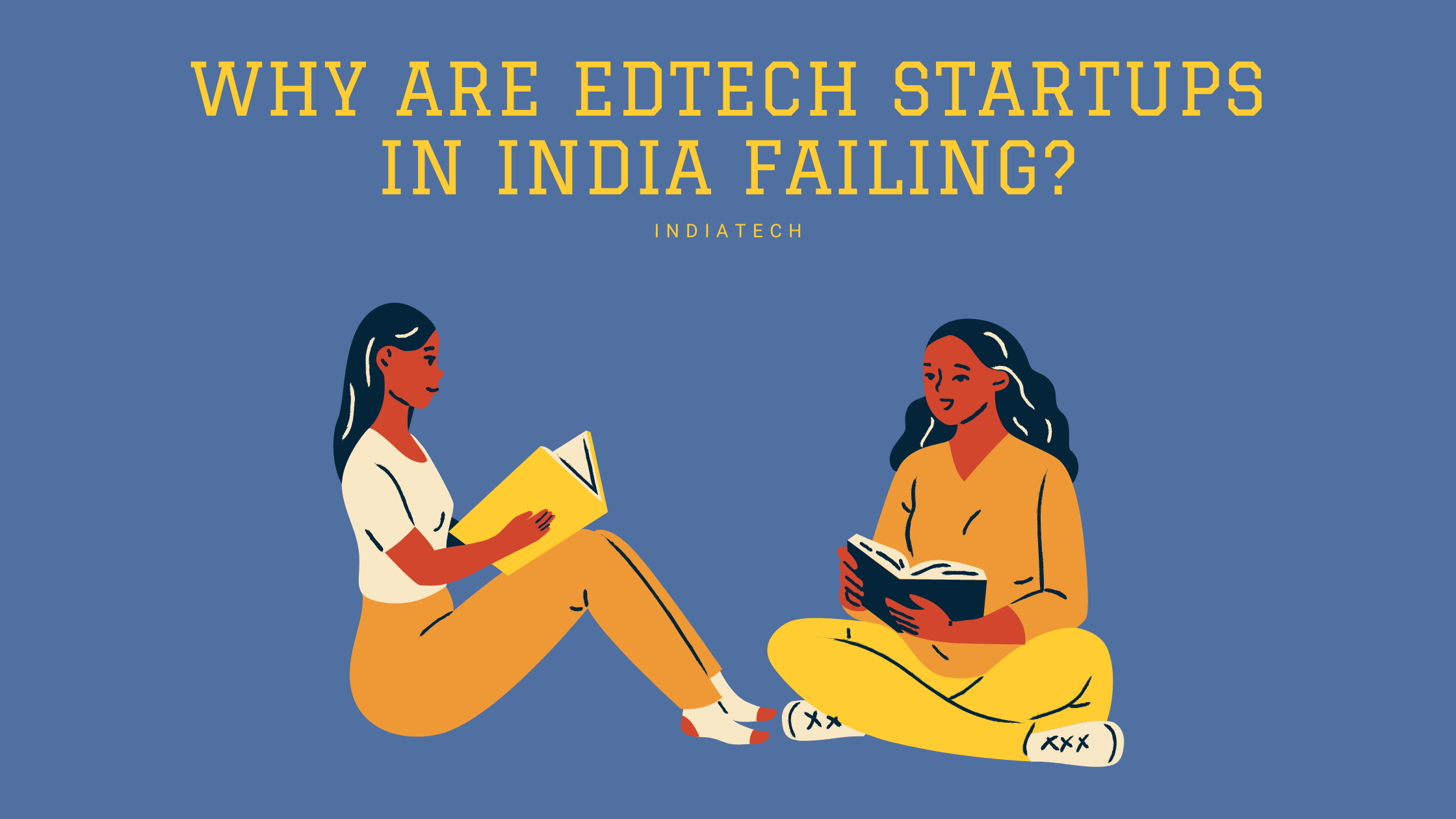Table of contents
2022 saw one of India's most talked-about trends in the eCommerce sector, with sales breaking new records and demand from Tier II and III cities increasing. All of this was driven by the pandemic-led increase in online shopping exposure.
This sparked a new trend within the sector, propelling D2C growth in India, driven by increased awareness and customers eager to experiment with novel products. The D2C eCommerce market in India is expected to surpass $66 billion by the end of 2023.
However, there are still a few struggling to establish an eCommerce business, but don't worry; we have a comprehensive guide to help you build your eCommerce store in India; read here (1).
For those concerned about the development expenses of creating an eCommerce website and other maintenance charges. E-commerce store hosting platforms allow you to quickly host eCommerce websites for a significantly lower cost than a developer.
Sadly, there was a lack of an India-specific solution for India's booming eCommerce market and local vendors.

Hence, introducing Becho.io!
This marketplace is poised to enter the market with a solution designed exclusively for India. It aims to enable Indian SMEs to build and host their eCommerce website in India affordably and conveniently and start selling online.
Employing such solutions can help businesses and entrepreneurs save the most funds for developing eCommerce websites in India and instead invest wisely in the eCommerce trends we will discuss in this article.
But first, let's look at some forever trends of eCommerce in India to help you facilitate the growth of your business forever.
Two major forever trends of eCommerce in India

Blogs in eCommerce
Blogs have always been an excellent tool and are a forever trend for assisting eCommerce businesses in interacting, engaging, and reaching large audiences online. But it's not like every blog succeeds; for those struggling with blogs, we have a complete article on how to start a successful blog; read here (2).
Store hosting platforms in eCommerce
Companies like The Hustle Company (3) employ eCommerce store hosting platforms instead of hiring a development team to build eCommerce websites since it is far more affordable and convenient, allowing them to save funds for investing wisely in other emerging trends in eCommerce India (4).
Applying these two forever trends of eCommerce can help you save money by using an eCommerce store hosting platform and also help you boost 55% more online engagement, interaction, and viewership owing to the impact of blogs in eCommerce.
Growing eCommerce in India

eCommerce will soon be at the forefront of commerce in India, and the trends described below will help you conquer the rising race. These trends are expanding fast, making them a crucial business tool for obtaining positive business growth.
Now is the time to thoroughly investigate this article and comprehend these rising trends in your eCommerce website in India.
The increased adoption of eCommerce and online shopping has resulted in the exponential rise of D2C brands in recent years, with the market growing at a 40% CAGR. We have dedicated an entire article on the rise of eCommerce in India; read here (5).
D2C brands are trending in India's eCommerce market because they develop, produce, and sell products and services directly to customers. Unlike traditional methods, the products are delivered straight to the customer without a third-party marketplace-based seller solution.
The new trend of D2C commerce and the rising trends described below will undoubtedly be the ideal combination we have been waiting for to advance the rise of the Indian eCommerce sector.
5 Emerging Ecommerce Trends in India to Watch Out for in 2023
Here are 5 emerging trends of eCommerce in India to watch out for in 2023 to help you expand your business and flourish in this fast-paced, competitive age of technology.
Social eCommerce
Social Commerce, the emerging eCommerce trend in India to watch in 2023, falls under a broader market framework because it refers to when a consumer's purchase experience occurs straight from any social media platform.
Clicking on links accessible through social networks that lead to an eCommerce website's product page with an immediate payment option is also an example of social commerce. With social commerce, there is no such thing as a single brand marketing approach.
Every brand must adopt and develop a niche-based marketing plan, as the sector demands diversity. You simply cannot apply the same marketing technique to a baby wear product that you would to an electronics product, so choose and employ wisely.

However, in the eCommerce trend in India, companies may compete effectively in the social commerce industry and convert viewers into potential purchasers by leveraging influencers, user-generated media, and call-to-action mechanisms.
Call-to-action has been extensively effective in 2022 and is certain to follow in 2023, with social commerce using terms such as "read more," "link in bio," "swipe left," and so on. It has now become the pushing mechanism to purchase models on every product available on the advertisement or social feed.
User-generated content has grown increasingly vital for marketers as social media networks with video-sharing platforms, and hashtag challenges have proven to be more valuable to brands. That gave rise to keyword technology with a social media twist, which can now be used anywhere on every platform.
This viewer-friendly programming and effective CTA mechanism have been a windfall for advertising and social media marketers. Furthermore, interacting with influencers should always be a top priority for every brand, as it creates an organic chance to interact and connect the audience to the platform.
Several social media platforms allow influencers to produce shoppable posts by including a direct link to a product or website of their eCommerce website. At the same time, other platforms give only the top and selected influencers the concept of making a "shop now" button and selling on its platform.
Trends in Trends
Social commerce is only a modest sector of India's rising eCommerce, but it is certain to expand alongside D2C because the future is co-related and holds the potential to enhance the growth of both. Social commerce without eCommerce is simply not conceivable (haha).
Social media stores simplify the customer experience by removing barriers from product discovery to purchase, as it is as simple as "click on it" and now "buy it." A potential buyer can change their mind with the click of a mouse.
Consumers may lose interest if they are obliged to click from their advertisement to the brand's website, add products to their shopping cart, and then enter their credit card information, making it a lengthy and unnecessary process.
Instead, keep things simple by connecting the product page link when uploading a product on social media to provide a more personalized experience in this expanding age of personalized shopping.

Buying on social media is far more interactive than typical marketplace binges. Consumers can look through comments to understand the demand, discover if there are any unfavorable ones, and then proceed with the purchase.
Social commerce is the next best thing in eCommerce in India since it has the potential to drive considerable growth.
Some companies are extensively promoting their products on Instagram and adding direct links to the product to redirect users to the checkout page on their eCommerce website to grow value through all channels.
This has created shopping on social media more engaging as customers can easily receive advice from other purchasers, flaunt their feedback to others, and connect with other customers or directly with the company itself.
Suppose your company is new to online sales. This is a great building approach to help you create critical social proof and promote participation and engagement with your new brand and awareness about your products and services.
Customers who purchase through an online platform will certainly be unable to check or try on the brand's product, which is understandable. But, social commerce can assist individuals in making an informed purchasing decision by using feedback and real-time photo or video uploads.
Using social media to manage the entire customer experience generates a positive feedback loop that enhances the brand's revenue and reputation.
It encourages active engagement and participation among its viewers and followers. This also enhances the company's operations through social media to efficiently care for and resolve issues.
Social commerce is also proving to be successful in Tier II, III, and IV towns in India, with D2C brands and competitive prices making it much easier for them to shop; of course, cash on delivery and logistics have a significant role to play.
Today, brands are working with several social media influenced-bodies to create a distinct combination of delivering specialized and customized product awareness to youthful consumers.
As Tier II and below regions shop online heavily using social commerce, it certainly will shape how India shops in 2023.
With the expanding social commerce and online D2C personalized shopping experience, companies are developing an omnichannel presence, making it one of India's leading emerging eCommerce trends.
Quick eCommerce
As eCommerce in India increases exponentially, with a predicted $188 billion by 2025, another eCommerce trend in India driving this estimated projection focusing on ease and efficiency is Quick Commerce.
Approximately 50% of worldwide buyers buy products based on delivery speed, and D2C firms in India are gradually moving toward incorporating tech-enabled solutions to provide customers with a phygital experience.
Using the Quick Commerce mechanism, sellers are improving their buying experience with speedy deliveries playing a vital role in developing quick and engaging contact with customers. Kirana's and dark stores are at the hub of this supply chain.

The essential element of Quick Commerce is speed, as it is no longer necessary to wait for days after placing an order but rather to have it delivered quickly when needed.
Some Quick Commerce businesses provide small-sized orders for lower-cost products with no delivery fee, which adds to the products in their cart and results in a satisfactory purchase.
This same-day delivery mechanism has zero to minimal requirements on practically every order.
Because of its major benefits, online D2C firms now have a greater opportunity to reach new customers faster and provide better services to increase sales via Quick Commerce and other tech-enabled solutions such as customizable payment gateways.
Quick deliveries have helped eCommerce retailers considerably increase their sales. So, let's examine how Quick Commerce and its tech-driven solutions can help eCommerce brands scale their business and why it is listed in India's top five eCommerce trends in 2023.
Given the recent rise in online shopping in India, adding Quick Commerce may help raise brand awareness and prosper with a stronger value proposition (6).
Online D2C businesses that use eCommerce platforms can track orders and assure timely delivery by using effective logistics solutions enhanced by Quik Commerce.
Brands may now reach a larger customer base rapidly thanks to the Quick Commerce method. It improves the customer experience while offering rapid gratification and aids in developing broad-scale brand recognition.
Customer loyalty and new customer acquisition are the driving forces behind the Indian eCommerce boom, as value-added services such as on-demand delivery assist brands in achieving a customer with a lifetime value.
Able to receive products in less time satisfies customers and increases reliability. It also enables quick re-order delivery due to optimal restocking of high-demand products, which aids in developing a loyal customer base and recruiting new members.

It can also assist eCommerce brands in increasing profit margins by implementing sustainable Quick Commerce practices with tech-driven solutions and optimizing all processes such as storage, procurement, payment receipt, customer service, etc.
It also helps to boost the volume of turnover and the number of orders that are fulfilled on time, which can lead to increased revenue and business growth.
In India, new-age shoppers, particularly millennials and Gen Z, are gradually turning away from Kirana stores and toward online shopping.
Quick commerce will play a significant role in the growing online economy, making it a key eCommerce trend in India in 2023.
Accelerating the rapid growth of the Quick Commerce industry, estimated to reach 5.5 billion by 2025. To keep up with this increasing expansion, online D2C companies must implement quick commerce techniques that benefit buyers and sellers.
VR, AR, AI & ML eCommerce
Technology is the undisputed accelerator to play a significant role in determining the scalability of the Indian eCommerce sector, with brands leveraging it effectively, generating a win-win opportunity for all stakeholders, sellers, and customers.
When used wisely and effectively, countless dimensions of technology, such as Augmented Reality Commerce, Virtual Reality Commerce, Artificial Intelligence Commerce, and Machine Learning Commerce, can yield major outcomes for Indian eCommerce businesses.
It would be magical for brands to provide interactive AR experiences for customers in which real products are enhanced with computer-enabled perceptual information or a computer-generated environment of unreal objects, scenarios, and so on, employing VR technology.
Implementing AI and ML would also improve their customer experience through interactive bots and omnichannel engagement. With technology developments occurring and expected to advance, firms should not be surprised if end consumers expect real-time shopping experiences.

A perfect example is, Metaverse, the latest breakthrough of today's era and convergence of AR, VR, AI, and ML with 3D holographic avatars; it is aimed to make available a hyper-real alternative world for customers and companies to shop virtually.
The pandemic compelled individuals to shop online and even for products that may otherwise be sourced from an offline store with ease.
Customers' expectations of eCommerce websites have risen dramatically in recent years. Shoppers want an eCommerce experience that combines the simplicity of browsing endless possibilities with direct contact and experience, enhancing purchasing confidence like in-store shopping.
Online retail, automobiles, fashion, and other industries have already adopted the metaverse and other VR, AR, AI, and ML developments, influencing how widely India will shop in 2023, with B2C powerhouse Flipkart already laying a footprint in the metaverse domain.
Imagine roaming around virtually in the Metaverse, purchasing in the parallel realm, and receiving it in physical space. Online shoppers can also interact with the products they select in real-time by utilizing their virtual avatar, enhanced with NFT Domains.
Assume an eCommerce corporation is using the Metaverse to create a digital store; consumers can enter, explore, and check the brand's merchandise with ease, virtually. Metaverse virtual stores are becoming a huge hit in the eCommerce sector, contributing significantly to market growth throughout the projected timeframe.
Increasing technical advancements and its incorporation by eCommerce brands will undoubtedly improve their developmental company growth and offer a more immersive experience tailored to the customer experience, making it the eCommerce trend in India in 2023.
Vernacular voice & visual search-based eCommerce
This eCommerce trend in India will push the next wave of eCommerce growth in India; vernacular voice and visual searches. Its expansion is driven by a major driving factor, "Bharat-oriented" eCommerce, which moves away from metros and focuses more on low-tier cities.
It is undoubtedly the next wave, driven mostly by voice and vernacular search, as Tier II, III, and smaller towns enter India's online shopping realm.
In their efforts to attract new eCommerce customers from low-tier cities, some eCommerce businesses have discovered that these customers prefer to connect and transact in their local language.

This allows them to make the entire experience much more seamless and personalized. According to a recent Nasscom analysis, 300 million of the 400 million internet users prefer local languages, and vernacular monetized internet users spend three times as much as larger monetary of English internet users.
Utilizing technology and innovation in vernacular settings will assist significantly in making digital commerce more inclusive and accessible for this massive cohort of customers eager to join India's online shopping universe.
The introduction of vernacular software applications contributes to the elimination of the language barrier. It gives customers an even more convenient shopping experience by letting them access the platform's content or products in their preferred language.
To cater to the diverse populations scattered across different locations, eCommerce platforms must incorporate several vernacular languages.
Placing out regional software interfaces is a step forward in strengthening the link between eCommerce companies and their vernacular customers in India. Connecting them to multiple vendors and brands online is an amazing opportunity.
If you are from a small town and do not speak English but know a little Hindi, having your native language would undoubtedly make you want to purchase, which is why online shopping in small towns is growing with the rise in vernacular voice and visual searches, making it the eCommerce trend in India in 2023.
Multiple Payment Option-based eCommerce
With the advancing technological progress in the eCommerce and tech industry as a whole, as we discussed above, it is realistic to assume that there will be even more ways of payment in eCommerce services, making it the trend of eCommerce in India.
Growing social commerce, quick commerce, vernacular, voice & visual searches, and AI-ML and VR-AR enhanced rising eCommerce trends in India would necessitate various payment choices for establishing omnichannel solutions for users to shop online in India.

Furthermore, suppose customers could save their purchase information on your website the next time they visit to make a purchase. This will allow them to check out faster and make purchases immediately, creating a more personalized atmosphere.
Being omnipresent in payments allows you to reach customers of all types, whether online, offline, on a website, on a mobile device, or even in a parallel dimension.
Intuitive connectivity, speed, and security must be prioritized in any omnichannel payment strategy to maximize revenue possibilities. Digital wallets are also quickly becoming the preferred payment method for most customers.
The rise in adoption can be attributed to the pandemic, which caused physical transactions to be shunned and digital payments to become the preferred method of payment. The usage of digital wallets shows no signs of slowing, as they are currently accepted in all tiers of cities.
Again, local payment options, also known as alternative payments, are the techniques that allow customers to make payments by other means, such as digital wallets, bank transfers, and prepaid vouchers, to name a few.
Offering an omnichannel payment option fosters customer trust and authority, making them more likely to finish a purchase. The expanding nationwide expansion might become easier if partnered with multiple payment providers with access to local payment options.
Furthermore, converting any channel into a payment funnel by providing customers with a "pay by link option" feature lets you simply send them a "URL" link that will drive them to complete the checkout process.
This could be accomplished through text messages, QR codes, emails, social media posts, or chat-based interactions. This payment connection method does not necessitate using an eCommerce business, and the information contained in the link remains unique to the recipient.
Fundamentally, it functions like an invoice and allows receivers to pay with their credit card whenever they want.

Open Banking is another developing solution that allows users to securely share their banking data with financial service providers using behind-the-scenes APIs to facilitate payment directly from their bank account.
The checkout procedure should always be flawless from the customer's Standpoint. However, sometimes payments fail to owe to the customer and, at other times, due to payment providers or faulty connections.
When this occurs, the transaction can be sent using AI technology to another payment service provider for approval, using a process known as "smart routing," which ensures a seamless checkout for the customer while increasing the merchant's conversion rate.
The payment orchestration layer enables merchants to obtain data and settle payments in a single location rather than visiting each payment service provider separately.
Multiple Payment solutions are an important component that contributes to the reputation of an eCommerce website, making it the eCommerce trend in India in 2023 because of the rising number of online shoppers in India's All-tier cities.
We have a complete article dedicated to various payment gateway options in India; read it here (7). Now that you know the emerging eCommerce trends in India 2023 make sure to put them to good use and consider their incorporation.
Folks that save money using eCommerce store hosting platforms like Becho.io instead of hiring expensive developers should carefully evaluate these trends and apply your savings to incorporate these trends.
It will help you reach new heights and achieve headway in the expanding eCommerce sector. Why the wait? Start your eCommerce store now to start selling online in India (8)!
Happy Reading!🫰













